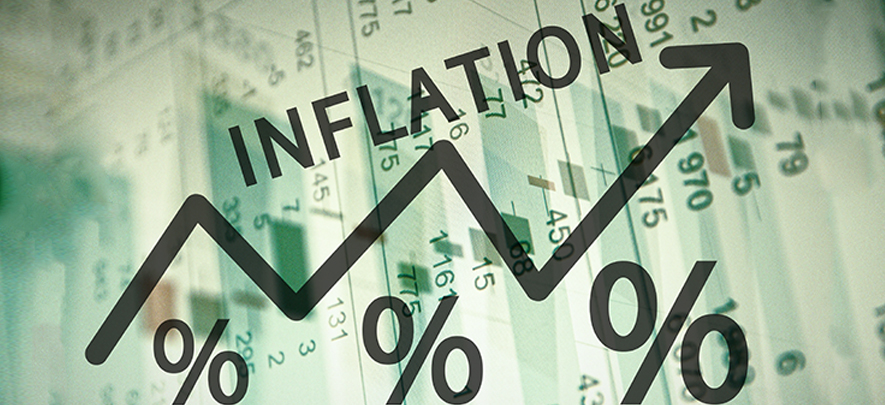Cost Inflation Index: The purchasing power of money

Economy
266 week ago — 6 min read
Background: The Cost Inflation Index acts as a tool that is used to calculate the rise in the price of an asset over a period of time due to the constant inflation changes. In their previous article Vakilsearch explained the effect of Coronavirus on business and economy. In this article they explain in detail the concept of Cost Inflation Index.
The world and the nation’s economy dynamically keeps changing over time. This leads to constant change in the prices of goods and services, the rise and the decline. To have a clear and better understanding of how the economy works, it is necessary to keep a track of the declines and rises of the purchasing power of money. To have a clear understanding, consider an example (cost inflation index) below:
Some years ago an individual could purchase 3 good items for INR 500, while in the present day, for the same amount one can just purchase 2 good items. This is what exactly inflation is, an increase in the living cost due to a decrease in the purchasing power of money.
1. What is the Cost Inflation Index (CII)?
2. What is the base year in CII?
3. Current Cost Inflation Index (CII)
4. The formula for calculating Cost Inflation Index price
5. Examples for calculating the Cost Inflation Index price
6. Conclusion
7. Frequently Asked Questions (FAQs)
What is the Cost Inflation Index (CII)?
Inflation in simple terms means an ‘increase’ or ‘raise’. The Cost Inflation Index acts as a tool that is used to calculate the rise in the price of an asset over a period of time due to the constant inflation changes. Under section 48, Income Tax Act, 1961, every year the inflation index is fixed by the Central Government and published in the official gazette.
Cost Inflation Index = 75% of the average rise in the consumer price index (it is the calculation of an increase in prices from the previous year as compared to the present year).
Also read: Digital Marketing Trends in Product Pricing
What is the base year in CII?
The long term capital assets always have a fixed value (cost price) irrespective of the inflation, and the price of these assets cannot be revalued. When these assets are sold, a high profit is generated further leading to high income-tax amounts. In order to help the taxpayers and buyers from paying a high amount of taxes, the CII is applied, wherein the price of the assets is increased, leading to a decrease in the profits and taxes.
To make the calculations for inflation percentage and Cost Inflation Index viable, a base year is decided, in which the value of CII is 100. Earlier, the base year was 1981-82, but, recently in 2017, the base year has been shifted to 2001 to make the valuation process simpler and viable, as many taxpayers faced issues while making calculations on the value of properties that were purchased before 1st April 1981. For all the purchases made before 1st April 2001, the taxpayers will be able to avail of all the indexation benefits by taking higher of the fair market value (FMV).
The change in the base year has helped in reducing the capital gains and pressure of high taxes on the individuals.
Current Cost Inflation Index (CII)
|
Financial Year |
Cost Inflation Index (CII) |
| 2001-02 (Base Year) | 100 |
| 2002-03 | 105 |
| 2003-04 | 109 |
| 2004-05 | 113 |
| 2005-06 | 117 |
| 2006-07 | 122 |
| 2007-08 | 129 |
| 2008-09 | 137 |
| 2009-10 | 148 |
| 2010-11 | 167 |
| 2011-12 | 184 |
| 2012-13 | 200 |
| 2013-14 | 220 |
| 2014-15 | 240 |
| 2015-16 | 254 |
| 2016-17 | 264 |
| 2017-18 | 272 |
| 2018-19 | 280 |
| 2019-20 | 289 |
Also read: SMEs evaluate Budget 2020
The formula for calculating Cost Inflation Index price
In order to calculate the long term capital gains/long term capital losses, and to calculate the cost inflation index price, the formula is:
Actual cost price * (CII year of sale/CII year of purchase)
Examples for calculating the Cost Inflation Index price
Example 1: A person purchased a property in the FY 2001-02, and the property is sold by him in the year 2019-20 for ₹3,00,000. Calculate the indexed cost.
- The Cost Inflation Index price= 3,00,000 * (289/100)= ₹8,67,000
Example 2: An asset was purchased by an individual in the FY 1957-58, well before the base year, for ₹1,00,000. And the fair market value for this asset was ₹2,80,000 in the year 2017-18. Calculate the indexed cost.
- Since the asset was purchased before 2001, i.e., the base year, the higher cost of acquisition is taken into consideration.
- The calculation for the indexed cost is as follows: 2,80,000 * (272//100)= ₹7,61,600.
Conclusion
As such, the Cost Inflation Index (CII) plays a key role in keeping a check on the changes in the economy. Additionally, it allows the central government to keep a track of how the inflation rates have changed over the past years, the way in which they can benefit the taxpayers and how other changes can be brought in to transform the economy.
Frequently asked question (FAQ)
Who decides the Cost Inflation Index (CII) rates and how is the notification made for the same?
The CII is decided by the Central Government and the notification is made in the official gazette every year, under section 48 of Income Tax Act, 1961.
Image source: shutterstock.com
To explore business opportunities, link with us by clicking on the 'Connect' button on our eBiz Card.
Disclaimer: The views and opinions expressed in this article are those of the author and do not necessarily reflect the views, official policy or position of GlobalLinker.
Posted by
Vakilsearch StaffGreetings! We would love to work with you and your company. We look forward to connecting with business houses and MSME's.
View Vakilsearch 's profile
Other articles written by Vakilsearch Staff
Know About the 4 Types of Partnership Firms
38 week ago
Most read this week
Trending













Comments
Share this content
Please login or Register to join the discussion